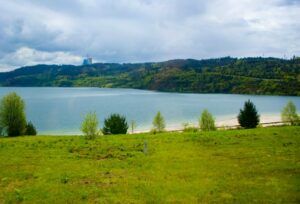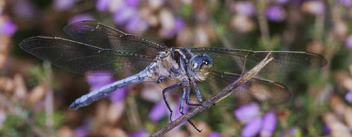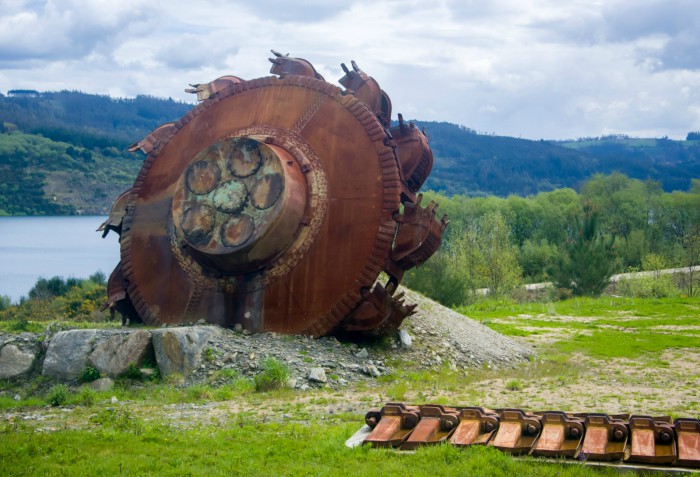Inicio / Sustainability / The environment / Natural capital and biodiversity / Lake Meirama
Lake Meirama
The creation of Lake Meirama in the valley of As Encobras, Cerceda (A Coruña) is one of the largest environmental restoration projects undertaken in Spain. The transformation of the former open-cast lignite mine into a man-made lake has created a large protected space, rich in biodiversity, which will increase the area’s economic and tourism development. Lake Meirama is the world’s first artificial lake that could be used as a water reservoir for a large population without the need for intensive water treatment, specifically A Coruña and its area of influence, thanks to its high water quality.
In May 2020, the environmental rehabilitation project culminated with the transfer of Lake Meirama – As Encrobas to the Public Hydraulic Domain.
The project
The transformation project, with a €60 million investment, consisted of creating a large artificial lake 2.2 km long and 1 km wide in the former open-cast mine, and reforesting the land and spoil tips.
The case of the Meirama mining-thermal complex is a clear example of a sustainable exploitation of natural resources, which makes the operation compatible and integrates with the protection of the environment and the creation of value in all stages of the process; before, during and after the exploitation of the resource.

History of the mine

Launch of mining operations

First restoration
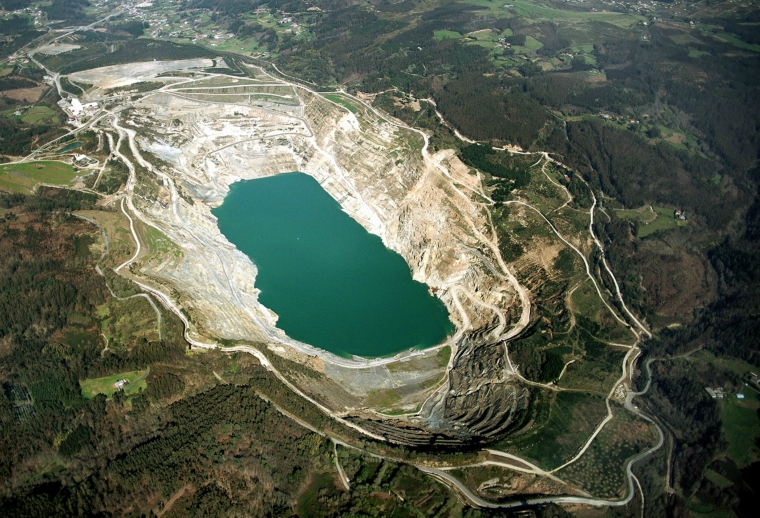
Conclusion of mining operations and launch of lake filling

Mining lake regulation project

Presentation of the book entitled ‘Biodiversity in the Meirama Mine Lake and Surrounding Area’

Conclusion of lake filling and ongoing supervision plan
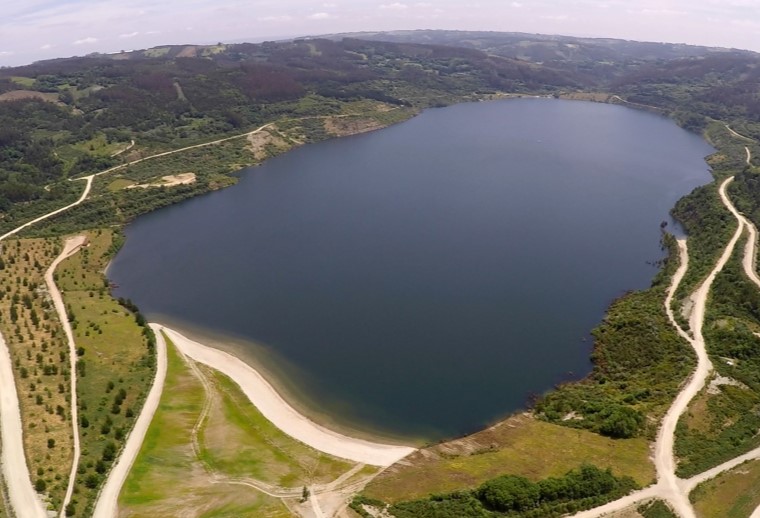
Transfer and opening of the lake
Main milestones
Operation of the Meirama mine began in 1980 and ended in 2008, having supplied 94 million tonnes of lignite to the Meirama Thermal Power Plant, located in an area next to the mine.
The rehabilitation phase continued until the corresponding administrative licence was obtained from the Consellería de Industria for the closure, and Augas de Galicia to transfer the lake to the public water supply.
The company’s environmental commitment for the restoration of the land began in 1985, when it presented the first plan to restore the mine.
The transfer of the lake to the Public Domain has meant the opening for public use of a natural space of 230 hectares, which includes the artificial lake and its beach, as well as the margins of the surroundings.
Birth of a lake
The main action in the Meirama lignite mine rehabilitation project consists of creating a large of 150 hm3 in the former open-cast mine.
The good quality of the water in Lake Meirama and its strategic location at the river headwaters makes it a future reservoir for the metropolitan area of A Coruña. In September 2013, Augas de Galicia authorised the project to regulate the mine lake for use as a future water reservoir for the municipality of A Coruña and its area of influence, with a view to strengthening the supply system in the region of A Coruña with an additional volume of approximately 24 cubic hectometres. Augas de Galicia has now concluded the first phase of this regulation project.
147 hm3
2.218 m
1.011 m
1.011 m
Meirama is the first time anywhere in the world that a lake of this type could supply water for large populations without the need for intensive water treatment. Since the filling process began, Naturgy has monitored the water quality closely, with over 600,000 readings. The company has partnered with GEAMA (Hydraulic Engineering and Environment Group) at the University of A Coruña for the project and is using pioneering techniques to monitor the lake water in situ..

Environmental restoration
- Thanks to reforestation, the land once used by our company is now a green lung and carbon dioxide sink.
- We planted over 450,000 trees on the land of the former mine, making the area a carbon dioxide sink.
- The forest management project for the external spoil tips, and the technical plan for the wilderness around the open-cast mine and internal spoil tips, concluded with the award of the PEFC Sustainable Forest Management certificate. The certificate guarantees that the raw materials come from a sustainably managed forest, and that the intermediate production processes (transport, transformation, etc.) are monitored.
- Conserving this natural space as it regenerates will encourage the presence of high conservation value species, making this habitat a suitable place for studying and teaching natural values, while contributing to the cultural development and heritage of the area.
Biodiversity

Lake Meirama has become an area of exceptional biodiversity. The exhaustive zoological and botanical inventory by the specialist team from the Encoro do Con Hydrobiology Station at the University of Santiago de Compostela has identified a total of 862 animal and plant species, 5% of which are endemic.
All the animal species, and many of the plants, have repopulated the area naturally, without human intervention. They have found Lake Meirama to be a peaceful, protected habitat.
Transfer to the Public Domain and opening
The environmental rehabilitation project of the old lignite mine in Cerceda has culminated with the transfer of Lake Meirama – As Encrobas to the Public Hydraulic Domain, after the approval and verification by Augas de Galicia of the delimitation of the public hydraulic domain in all the margins of the lake.
The creation of Lake Meirama in the As Encobras valley, Cerceda (A Coruña) is one of the largest environmental rehabilitation actions carried out in Spain. The transformation of the old Lignitos de Meirama mine into an artificial lake has generated a large protected area of biodiversity that will boost the economic, tourist and environmental development of the area, due to the natural value of the space created.





